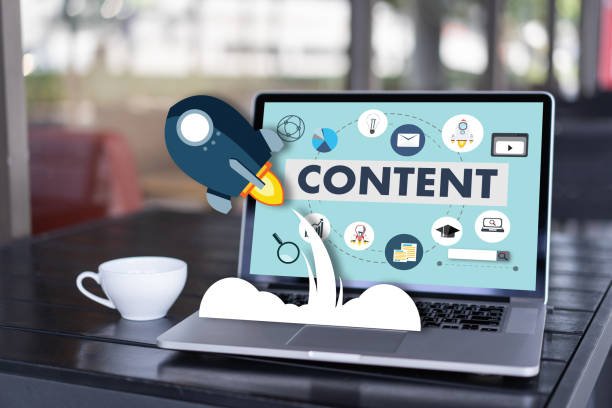Google AdWords Evolution
Google AdWords is a form of digital marketing that has been around for decades, ensuring that companies across the globe access potential customers through strategic ad campaigns. In 2000, the company transformed the manner in which companies deal with their customers via the internet. This was initially the idea about keywords that AdWords allows advertisers to bid on the searches being made by users. It has been gaining popularity over the years as it has become the most powerful digital advertising market, providing a comprehensive range of opportunities and functions. However, the recent happenings have changed things so much in the game. Google no longer only uses conventional advertising that is keyword-based, but it has evolved to encompass the incorporation of artificial intelligence, more specific methods and more complicated bidding models. These are radical transformations that can change how business is conducted through the digital marketing world and adopting this strategy has become a necessity among advertisers.
The Increase of AI in AdWords Campaigns
Artificial Intelligence (AI) is not a far-fetched idea that is being experimented with in Google AdWords, it is a phenomenon that is already transforming the face of advertising. The can now optimise and make decisions more efficiently in real time than before due to the opportunities presented by machine learning. Features that make use of AI, such as Smart Bidding and automated targeting, enable advertisers to rely on data analysis and not on manually made adjustments. This technology minimizes human error and makes campaigns more effective since it also learns and evolves the strategy depending on the results.
It is not that IA is all about automation, but accuracy as well. The advertisements are now formatted in a way that they are able to reach the intended audience at an opportune time by referencing contextual and behavioral data. Learning machines take millions of user interactions on different platforms to understand the behavioural patterns and create user feedback, which can be used by Google to determine where ads should be delivered to the user. This shift towards AI is more than just making ads smarter, but maximizing the potential of an advertising campaign by an advertiser.
Differences between Keywords and Targeting on Intent-Based Targeting
One of the most significant shifts in Google AdWords is the change of a keyword-based model to a model with a focus on the intent of the user. Previously performance of a campaign relied heavily on the choice of keywords in the hope that people would search them and then click on these ads. But today, with Google highly sophisticated algorithms, the context behind a search, user habits, and intent are taken into consideration to provide even more applicable ads. This transition has been made from keyword-based advertisements to a much more comprehensive explanation as to why the user is seeking information, in the first place, on their part.
Targeting based on Intent goes beyond the keywords that have been keyed into the search box. It also looks at the past searches, like browsing history, places and sentiments. By using this information, Adwords is also in a position to make more informed and on-point adverts, leading to increased user engagement and eventually better conversion rates.
The Effect of Viewer-Oriented Ad Campaigns
With increased data analysis, the audience-centric marketing approach has been the key to effective campaigns. Google AdWords has increasingly enabled advertisers to create campaigns based on groups of people, either based on demographics, interests or even behavior. The introduction of measurement tools such as Google Analytics and Audience Insights has simplified the process of companies developing highly focused advertisements to those that are likely to be converted.
This has altered advancement into a more individual experience. Rather than trying to net as widely as possible and hoping to find the most effective, marketers can sweeten the messages to more succinct members of the population. As an example, targeting an ad campaign to prior exposure to or experience with a site can significantly raise the engagement levels. As Google keeps refining the targeting algorithms, companies will be able to focus more on specific groups and maximize the effectiveness of advertisements and increase traffic quality.
Adjustments in Formats of Ads: More attractive and interactive
The manner of advertisements provided has greatly shifted, evolving from the use of text-only advertisements to the more dynamic advertisements, rich media and interactive characteristics. Google AdWords has achieved a lot by employing videos, more visual assets, carousel advertisements and dynamic advertisements that adjust to the device being used. They are rich media ads that are interactive and result in more traffic than traditional banner advertising.
Audio ads are also on the rise, and interactive ad formats that allow direct user interaction with the content (e.g. product sliders or quizzes, and interactive videos) are all becoming popular. Such types of forms are especially effective in attracting the attention of users and provoking interaction and, therefore, offer even more chances to the advertisers to communicate with the potential consumers. With shorter and less captivated attention spans of consumers, these more attractive advertising mediums are capable of helping brands pierce through the media clutter and connect with the customer in an effective way.
New Bidding Models: The Movement to ROAS
The Google AdWords built on the Cost-Per-Click (CPC) model is not the only one way left to measure the performance of the advertisement anymore. The proposed attention is on Return to Advertising Spend (ROAS), which is a more accurate and relevant metric. The machine learning capabilities of the advent bid strategies, i.e., the Target ROAS strategy or Maximize conversion value, Google now automatically adjusts bids on a real-time basis in line with the likelihood of generating a higher return.
The shift to ROAS means that the advertisers are no longer worried about how they are paying money per click, but are more interested in how the clicks are generating money. Bid optimization tools powered by artificial intelligence can help companies ensure that their advertising funds are closely aligned with their financial goals and align their budgets in such a way that they deliver the best ROI on their advertising dollars, as opposed to driving the most traffic volume.
New Data and Privacy Regulations and Compliance Metrics: New Compliance Metrics in Google
With its online privacy being a key concern in the online environment, Google has had to adapt its advertising solutions so that it is compliant with the constantly evolving regulations in various countries, including GDPR and CCPA. To solve this, Google has made a number of updates to AdWords in the directions of transparency as well as protection of information. As an example, the new comment tracking policy restricts the personal information collected by the advertisers, as well as gives the users more control on their data.
The implications of these transformations will be immense on how advertisers focus and monitor users. Marketers will have to be able to use existing data more creatively and direct their attention to aggregate information rather than tracking data about individuals. Although this can be a challenge and yet is an opportunity to advertisers to gain confidence to their customers by being open, ethical and telling the truth with their practices to do with data.
What The Future Holds In Google Ads: Trends To Observe
Within the not-so-distant future, the following stage of Google Ads is an ocean of potential, especially since the world of tech is changing every minute. Among the biggest trends that it is essential to take note of is the incessant integration with AI and automation, which is likely to enhance the effectiveness of ad management and boost the precision of targeting. As voice-search and other intelligent assistants become more ubiquitous and utilized, user ad usage is modified. Google’s attempts to improve its voice-searching algorithms are likely to transform how advertisers answer the search query.
There is also augmented reality (AR) and virtual reality (VR), which are projected to make more incursion into the world of advertising. As these technologies become more mainstream, Google may come up with new advertisements in which consumers interact with the brand in different ways. Knowledge of the current trends helps advertisers look forward to a future where we are going to witness further penetration of digital advertising into our everyday lives.
In conclusion, the significant shifts in Google AdWords introduce a big change to the environment of online advertising. The use of AI in ads, the switch to the intent-based targeting model, and other similar changes are not only transforming the process of ad creation and the way businesses conduct interaction with their customers. When the advertisers engage these novel approaches and tips and tricks, they will be in a much better position to attain success in a rapidly evolving and intricate digital landscape. The important issues in emerging winning in the new digital era are flexibility, innovation and a deep understanding of emerging trends and the dynamic expectations of a consumer.


